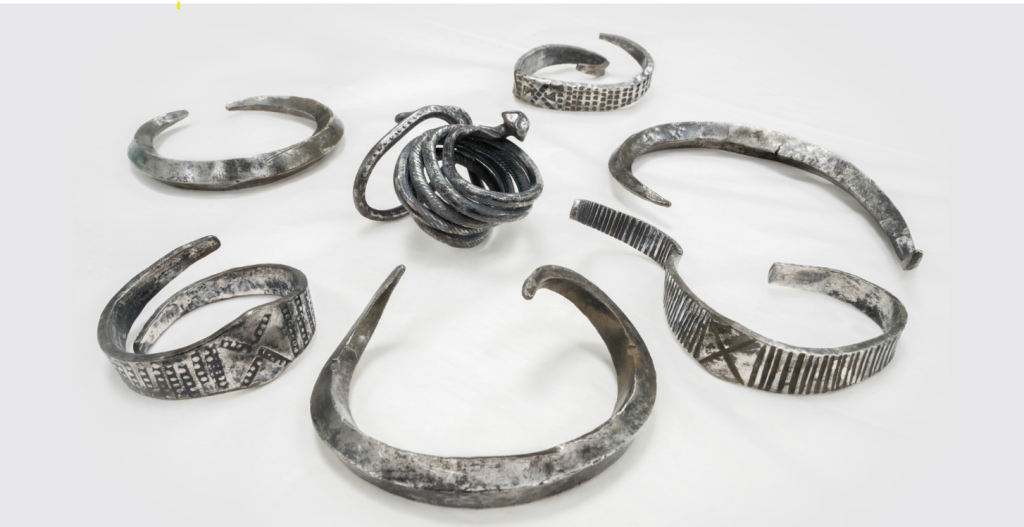A stunning discovery of Viking silver armlets near Aarhus, Denmark, reveals connections across Europe and the British Isles.
Others are reading now
A 22-year-old archaeology student has made an extraordinary find in Denmark: seven Viking-era silver armlets, unearthed near Aarhus, the country’s second-largest city.
The Moesgaard Museum announced the discovery, describing the relics as “spectacular” and of great historical significance.
The discovery was made by Gustav Bruunsgaard. While using a metal detector and spade in an area known for its Viking heritage, Bruunsgaard stumbled upon the curled silver armlets in the mud.
Archaeologists believe the armlets date back to around 800 CE, placing them in the early Viking era.
Also read
These armlets are more than just striking pieces of jewelry; they offer a glimpse into the extensive trade and cultural connections of the Viking world.
International Connections
According to experts at the Moesgaard Museum, one of the armlets is of a type that originated in Viking settlements in what is now Russia and Ukraine, indicating the far-reaching influence and connections of the Vikings.
Three of the other armlets are of a style typical of southern Scandinavia, likely Denmark, and the remaining three, though rare and unornamented, are known to have origins in both Scandinavia and England.
The armlets weigh over 500 grams in total.
Silver was not just a form of currency but also a symbol of wealth and power, reflecting the owner’s financial status.
Aarhus: A Central Viking Hub
“The find emphasizes that Aarhus was a central hub in the Viking world,” Kasper H. Andersen, a historian at the Moesgaard Museum, told Ritzau.
This discovery adds to the rich history of the region, already known for its deep Viking roots and archaeological treasures.
The Moesgaard Museum, where the armlets will likely be displayed, is famous for housing the Grauballe Man, a remarkably well-preserved Iron Age body found in a bog in 1952.
The museum continues to be a key institution for understanding Denmark’s ancient history, now further enriched by this latest Viking-era discovery.


